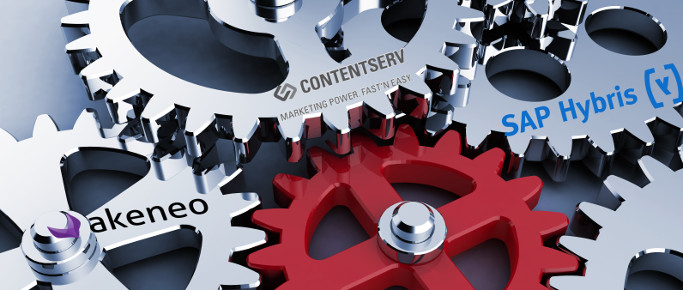
It is important that online shops, both B2C and B2B, are aware of the existence of easy-to-use and cutting-edge PIM systems, their advantages as well as which elements can be used to detect if a PIM is needed.
As we know this is a complex topic that attracts a lot of attention, Handelskraft has brought together three experts of well-known and unique PIM system vendors in the market: Christian Rohr, Senior Product Marketing Manager at SAP Hybris, Frédéric de Gombert, CEO of Akeneo and Alexander Garkisch, Business Development & Strategic Marketing Manager at CONTENTSERV, have asked them about the real potential of PIM, how companies can benefit from it and how retailers can make the best choice.
Why is PIM becoming fundamental within the e-commerce sphere?
SAP Hybris:
With more and more customer touchpoints and channels emerging, and rich content being an absolute necessity for creating exceptional customer experiences a good PIM solution is fundamental to creating and managing structured as well as unstructured product content, and making this product content available across all touchpoints seamlessly.

A PIM solution also gives the power of creating and maintaining rich product content into the hands of business users through intuitive UIs, workflow & collaboration capabilities, etc.
CONTENTSERV:
Showing each customer the suitable product at the right time with the necessary relevance has become crucial in e-commerce these days. This can only work with accurate product information, managed in an up-to-date PIM.
Akeneo:
Usually, PIM is part of a global marketing and digital strategy. It is considered one of the most essential digital transformation tools.
What are the main advantages of installing a PIM system in a web shop?

CONTENTSERV:
PIM enables efficient processing of product information, provision of consistent information across all channels as well as compilation and delivery of suitable information in real time.
Akeneo:
To make easier the (e)marketer day-to-day. Productivity is definitely one of the biggest advantages provided by a PIM installation. It enables them to focus on their first skills – they are not “spreadsheet fillers” anymore! This growth in productivity can also increase the catalogue size. The second advantage is the time to market. PIM makes the integration and spread of product contents easier and faster. It is a key stake for merchants.
SAP Hybris:
Being able to create highly personalized, exceptional user experiences from a single consolidated data repository, leveraging rich media and empowering business users to create and manage product content intuitively without the need to involve IT. Business users are able to set up product content rapidly, and do efficient mass data editing and content enrichment with digital assets. Also it reduces complexity and total cost of ownership and businesses are able to rapidly adapt to changing business requirements.
What are the critical aspects to take into account during the decision-making process of acquiring a PIM system? When do you say “You don`t need a PIM”?
Akeneo:

CONTENTSERV:
PIM pays off for every company that communicates with its customers. We support our clients in creating business cases.
SAP Hybris:
When considering acquiring a PIM system, you should always look for a PIM solution that is scalable, can handle complex product specifications and attributes and is easy to integrate to your existing IT infrastructure.
For figuring out if you actually need a PIM system, you should ask yourself these questions:
- Can you fully automate your product data load?
- Is your data quality always meeting your publishing requirements?
- Do you have full control over the content of your products? Do you create the full content in-house?
- You have no need of approval and/or governance processes to ensure data quality?
- Do you only need one central product assortment and you communicate this assortment across all customer touchpoints?
- You don’t have any B2B business partner that needs to deliver or pick up your product data?
- Do you have your digital asset production and assignment to your products fully automated and the quality is always what you expect so you have no need to control this content
SAP Hybris:
If you answer ALL these questions with “yes”, then you probably won’t need a PIM solution. If you answer just one of the questions with “no”, it is strongly recommended to look into purchasing a PIM solution.
We hope we have helped you to make the best decision towards success. If you want to know more about what role will play PIM systems in the B2B sphere and their challenges, then stay tuned and don’t miss our second part of this hands-on and interesting interview next week.


![PIM Systems: How to Improve Product Experience Across All Channels [5 Reading Tips] PIM Systems ERP Reading Tips](https://www.handelskraft.com/wp-content/uploads/sites/2/2022/07/pim-system_erp_lesetipps_handelskraft_beitrag-1024x538-1-190x100.jpg)
![PIM and DAM Software – Providers and Systems Compared [Updated White Paper] PIM and DAM Software – Providers and Systems Compared Updated White Paper](https://www.handelskraft.com/wp-content/uploads/sites/2/2023/01/pim-and-dam-software-providers-and-systems-compared_updated-white-paper_beitrag-190x100.jpg)

very nice post